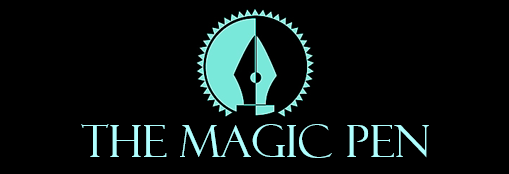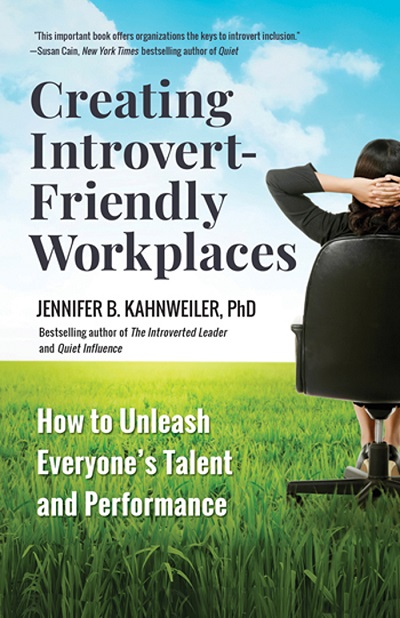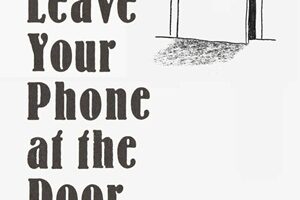Jennifer B. Kahnweiler, PhD, Certified Speaking Professional, is an author and one of the top global leadership speakers on introverts. She is hailed as a “champion for introverts” who helps organizations, teams, and individuals understand introverts.
Creating Introvert-Friendly Workplaces addresses the question, “how can we tap into the potential of introverts and support their working styles in traditional extroverted workplace cultures?”
Kahnweiler has been studying the temperament of introverts and believes that extroverts are allies who can and should speak up for the quieter introverts. She has conducted an Introvert-Friendly Organization Survey (which is included in the Appendix of this book) in order to gather more information about the challenges introverts face at work.
MORE ON DR. JENNIFER KAHNWEILER: https://jenniferkahnweiler.com/
Kahnweiler expresses concern for the dangers that companies face when they become comfortable as monocultures and “echo chambers of uniformity.” She explains that in today’s workplace, diversity is expanding but she also believes there is one area of diversity that is not being talked about enough.
“This aspect of diversity, which falls under the umbrella category of neurodiversity, is temperament, and it includes introversion and extroversion.”
Creating Introvert-Friendly Workplaces offers bullet point definitions of what an introvert is, their uniqueness, strengths and how they contribute to the work force. Kahnweiler stresses the importance of tapping into this uniqueness rather than attempting to turn them into extroverts, as some companies have tried to do. She addresses such things as creating an introvert friendly atmosphere, attracting introvert talent, creating an introvert friendly hiring process,
She devoted a chapter on how to lead and coach introverts, disproving some of the myths that people have about that temperament.
Kahnweiler has offered names companies that harness introvert power to demonstrate how well this technique of harnessing the power of all employee’s personal talent is beneficial to the employer.
Creating Introvert-Friendly Workplaces identifies seven key functions that organizations
should address to create more “introvert-inclusive cultures and work practices,” as well as five key ways to create an introvert-friendly workplace.
Kahnweiler has developed a comprehensive litmus test to determine whether someone is more introverted or extroverted and also offers quizzes the reader can use to find out what your organization has in place for introverts, presenting and another table to compare how your company can be improved. Creating Introvert-Friendly Workplaces has some exceptionally good questionnaires in the Appendix to help organizations implement her suggestions.
Referencing studies on communicating with introverted people, she offers a guideline on how to open up the would of communication with those less likely to initiate a conversation
Finally, it is important to realize that holding space for silence must extend to actual conversations as they are taking place as “…trust and understanding are the basis of meaningful communication.” pg 57
She devotes a chapter to designing the workplace setting and includes photographs with advice on what to watch for and how to secure the correct amount of privacy for workers. Kahnweiler also offers suggestion on how to create remote work effectively while still building relationships,
Her book is professionally written. She offers personal testimonies, concluding her thesis in each chapter with bullet points at the end and a comprehensive summary to conclude those thoughts. Though some of what she says is repetitive and a couple of her chapters could possibly have been combined the book is thorough and offers a unique outlook on creating a stronger workplace.
Dianne Gardner



























